Wildlife of Niijima Island and Shikinejima Island
Japanese White-Eye (Niijima Island)
The village bird of Niijima Village, the Japanese white-eye (Zosterops japonica) is approximately 12 centimeters in length and inhabits Oshima Island and the other Izu Islands. A subspecies of the white-eye, the Japanese white-eye typically has a larger body and a longer beak than other white-eye subspecies. The manhole covers in Niijima Village bear two Japanese white-eyes, himeyuzuriha (Daphniphyllum teijsmannii), and a spider lily (the bird, tree, and flower of the village, respectively). The Japanese white-eye was designated a natural treasure by Miyake Village.
Gray-faced Buzzard (Niijima Island)
The gray-faced buzzard is a migratory bird-of-prey that breeds in Japan and other regions in East Asia. It spends winters in a region spanning the Southwest Islands to Southeast Asia. Three pairs of buzzards have been observed in Niijima Island. The gray-faced buzzard’s preferred breeding ground is in forests near residential areas, especially in areas referred to as yatsu or yato (rice paddies, orchards, farms, etc.). Their diet consists of small snakes and lizards, frogs and other small amphibians, crayfish, large insects, arthropods such as the centipedes, small mammals such as rats and moles, and small birds.
https://www.wbsj.org/nature/hogo/others/iba/search/sites/kanto/77-niijima_shikinejima.htm(外部サイト)
![]()
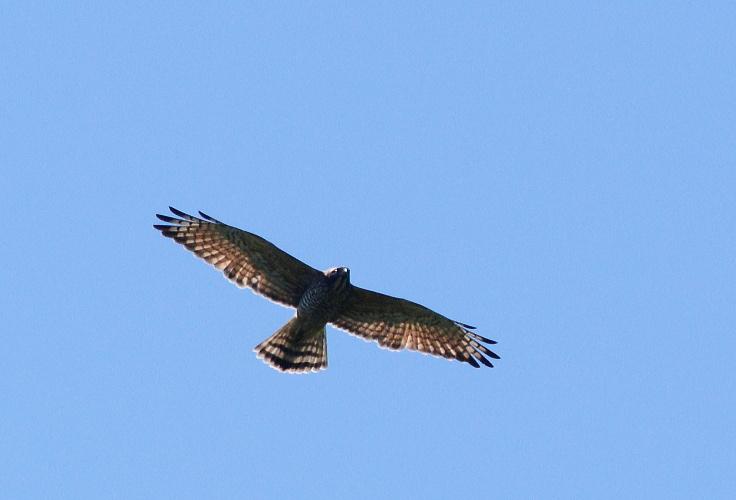
Takabe (Yellowstriped butterfish)・Niijima
Takabe (Yellowstriped butterfish) is a fish that represents the Izu Islands, including Niijima Island. The length is about 25 cm (9.8 inches). It is characterized by yellow-colored stripes on a blueish body. It swims in swamps and near shallow rocks. In the spawning season in summer it becomes rich with oil. From June to September, fishermen catch them in Tatekiriami (fish trap), in which the fishermen diving in and around the island set mesh networks that they chase the fish into. In another method the fixed shore nets and wait for the fish to get caught.
Hamayu (Crinum)・Niijima
The flower of Niijima village, Hamayu (Crinum) is a perennial plant of the family Lycoris radiate. Flowers bloom every summer, and are clustered in coastal areas where the average temperature is 15 degrees or higher. The origin of the name is that this flower looks like "cotton (Yu)" that hangs on Japanese cleyera that is used during Shinto rituals. The alias is also called Hamaomoto, is because the leaves are thick and resemble Omoto.
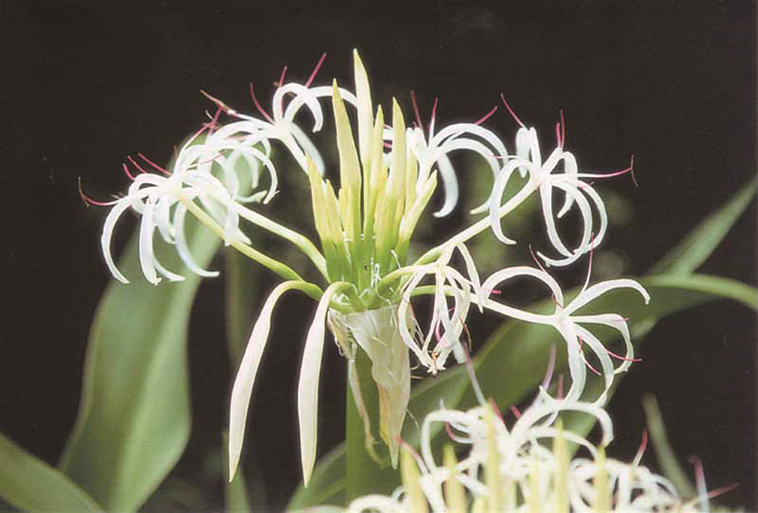
Himeyuzuriha(Daphniphyllum teijsmannnii) ・Niijima Island
The tree of Niijima village, Himeyusuriha (Daphniphyllum teijsmannnii) is a tall evergreen tree of the Daphniphyllum, genus Daphniphyllaceae. It grows along the coast of a temperate area, and it is also resilient against the sea breeze. On the other hand, it changes in appearance due to wind strength. In a place with strong wind, it is a shrub-like tree shape, and in the weak valley of the wind and inland, the tree height extends to about 10 meters (33 feet). Flowers bloom from May to June with a distorted, elliptical fruit, which ripens to black in winter.
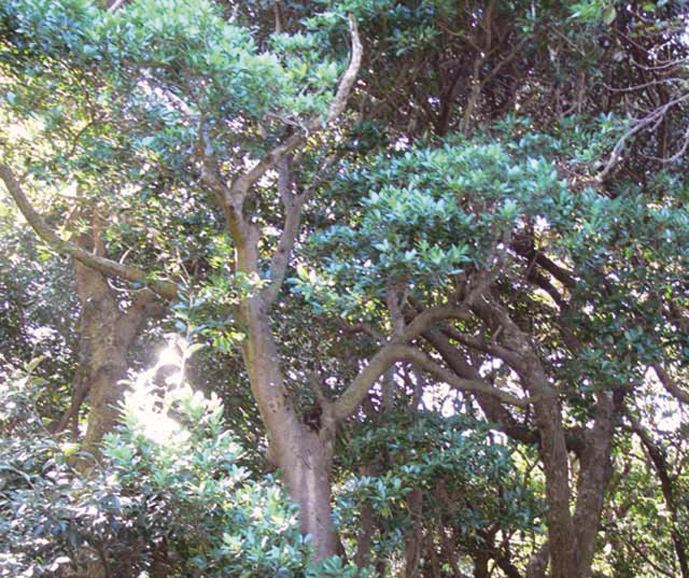
Yew Plum Pine (Shikinejima Island)
A yew plum pine (a tall evergreen tree) growing on the grounds of Toyo Temple in Shikinejima Island has been designated a natural treasure by the Tokyo Metropolitan Government. With a height of 28 meters (91.9 feet) and a trunk circumference of 5.3 meters (17.4 feet), the tree produces male flowers from May to June and fruit that ripens and turns burgundy around October. In the past, children enjoyed the fruit, but nowadays it is consumed mainly by birds. The wood of yew plum pine trees is a valuable building material, because it is resistant to water and moisture. In addition, the tree can withstand strong winds, so it is often planted in gardens or used to create hedges.
(C)Shikinejima Tourist Office
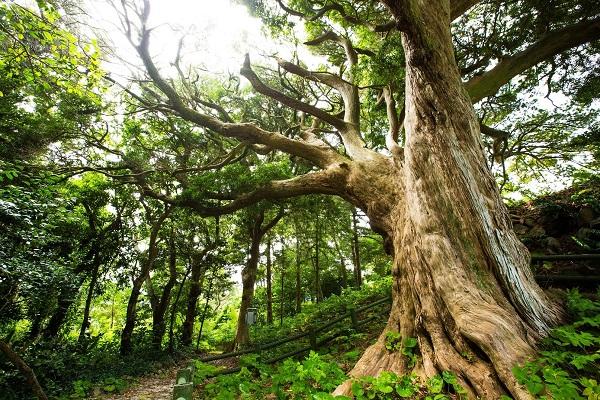
Violet Wood-Sorrel (Shikinejima Island)
Violet wood-sorrel is a perennial plant native to South America. Brought to Japan for its aesthetic value in the Edo period (1603-1868 CE), it now grows in the wild, in areas spanning the Kanto area and westward. Each blossom consists of five petals of a pale violet shade and has a pale green center. In Shikinejima Island, the flower blooms from March to October.
https://www.niijima.com/facility/community/hakubutsukan/shokubutsuzukan.html(外部サイト)
![]()
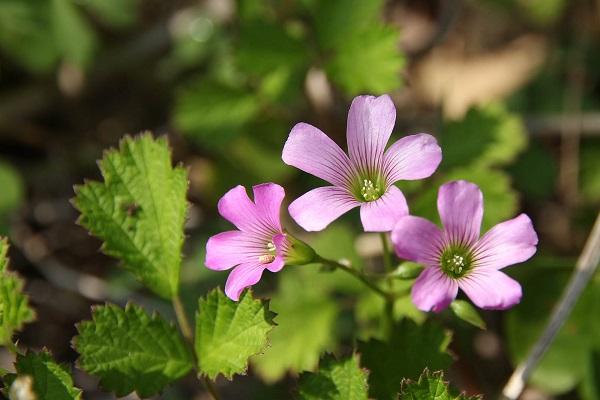
お問い合わせ
このページの担当は自然環境部 緑環境課 自然公園計画担当です。
Related links
Niijima Island and Shikinejima Island
- Features of Niijima Island and Shikinejima Island
- History of Niijima Island and Shikinejima Island
- Wildlife of Niijima Island and Shikinejima Island
- Sightseeing on Niijima Island and Shikinejima Island
- Accessing Niijima Island and Shikinejima Island

